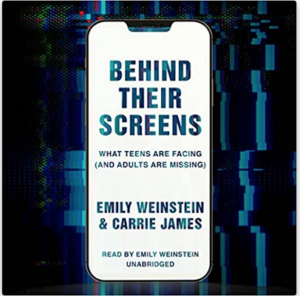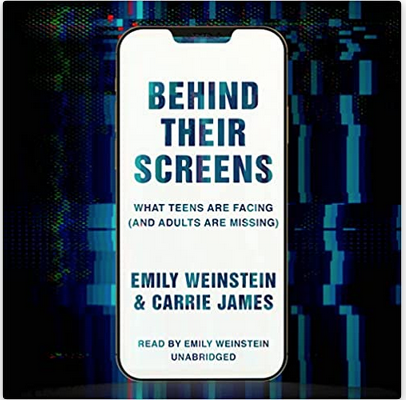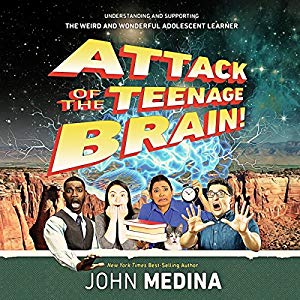 So, you think you know what effect social media has on teens? There is one problem: too much screen time. Many of us have very strong opinions like this mostly developed through poor media coverage of the research, but you will develop much a more nuanced, well-reasoned and balanced argument through this book that will have you carefully reevaluating what you think you know. In Behind their Screens What Teens Are Facing (and Adults Are Missing), Emily Weinstein and Carrie James discuss data gleaned from thousands of teen interviews as they tried to understand the relationship between teens and digital devices and platforms. Both authors are Harvard researchers and parents bringing to their writing the insights from both research and understanding of what it means to be a parent for teens today. The book is a very nice succinct and clear summary of the research done to date on the issue.
So, you think you know what effect social media has on teens? There is one problem: too much screen time. Many of us have very strong opinions like this mostly developed through poor media coverage of the research, but you will develop much a more nuanced, well-reasoned and balanced argument through this book that will have you carefully reevaluating what you think you know. In Behind their Screens What Teens Are Facing (and Adults Are Missing), Emily Weinstein and Carrie James discuss data gleaned from thousands of teen interviews as they tried to understand the relationship between teens and digital devices and platforms. Both authors are Harvard researchers and parents bringing to their writing the insights from both research and understanding of what it means to be a parent for teens today. The book is a very nice succinct and clear summary of the research done to date on the issue.
Teen lives today are highly politicized and sensationalized, and often media insights are presented as absolute truth. This book asks you to look at the research a bit more deeply and to ask important critical questions. You are not expected to accept the authors’ conclusions at face value, instead, they walk you through multiple interpretations, making sure you first know the right questions to ask. While the entirety of the text gives detail about the methods and motivations of the authors’ research, the appendix further explains their methods enabling practitioners and researchers alike to learn from the careful consideration Weinstein and James gave their design. In many ways, their research design itself shows us how to communicate with teens. Much of which involves simply giving them the space to speak but also knowing what potential responses a carefully constructed question will afford.
Grounded in Urie Bronfenbrenner’s ecological theory of human development, the teen develops a nested set of societal, social and biological systems. To understand social media practices, we need to examine teen relationships with not only peers but also parents and adults who seek to find solutions for teen behavior and perhaps put too much blame on social media. We also need to respect their biological development, and how their neural circuitry sets them up to value rewards in different ways at different ages. The authors here are not simply trying to ask if social media impacts stress, anxiety, self-image, and depression in simple causal relationships; they put value in the context and the interaction of teen values and goals with digital practices. Skillfully, these authors managed to bring all of this complexity into a clear, informative, and entertaining read.
Individuality and variations in perspective are recurring themes in the text; teens are unique and complicated and there is no panacea that explains all relationships. They correctly point to individual variations in developmental trajectories for teens, the systematic variation in how teens interact with and internalize their relationships with the digital world. And, while always systematic, they remind us throughout that this is a complex system of relations that does not always have simple answers. Really, the best way to understand a teen is to listen.
The book covers a wide array of topics, and the authors do not shy away from the tough questions. Topics cover teen perspectives on politics, trading nudes, sexting, and teens’ understanding and concerns about their digital footprint. Through each of these topics, they ask not only what the impacts on teen wellness are but more importantly what are the reasons teens engage in these behaviors. What are the perceived benefits for teens and the social implications for engaging and not engaging?
Overall, the authors make a very clear case that we need to not simply tell teens how to use digital devices, offer them well-rehearsed sound bites, and beat them over the brow with restrictions, shaming, and warnings. While this may make us feel we have done our job this is not the more difficult work of trying to engage them in meaningful discussion where we all could learn something. We need to spend time with them, listen to them, and respect that they are engaging in digital behaviors for reasons: teens are not simply little adults; their motivations and experiences differ from ours. Our responsibility is to better understand those reasons and be there to help them write the stories that will empower them in their own development.





